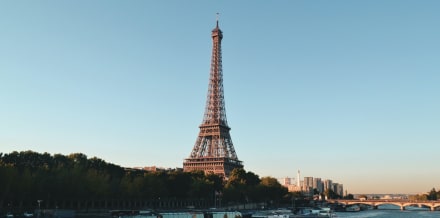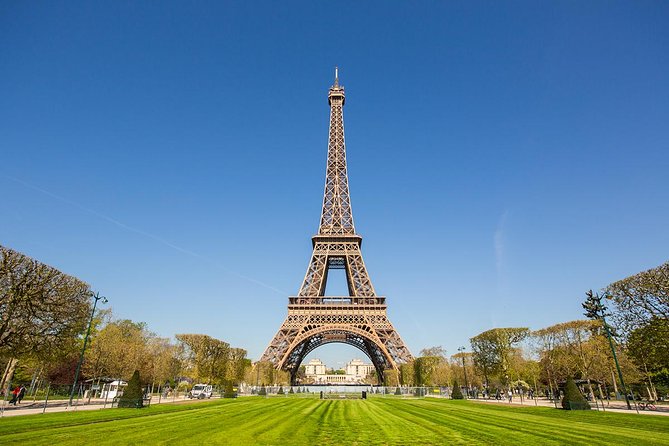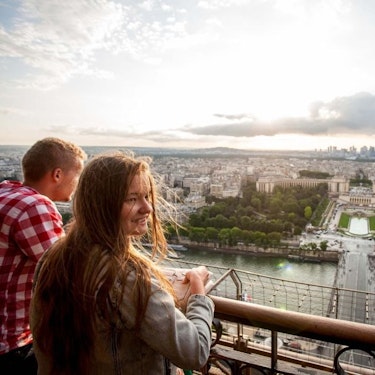More about: Views from the Eiffel Tower
One of the highlights of any first visit to Paris is climbing the Eiffel Tower. The world-famous Iron Lady is one of the best viewpoints in Paris. From the tower you can see the Arc de Triomphe, the Grand Palais, the Louvre, Notre Dame de Paris, and even the Sacre Coeur basilica if the weather is good.
There are signs at the top explaining the famous sights that can be seen from the top. But to be honest with you, one should ask oneself which places can't be seen from the top of the tower, as you can actually see, more or less clearly, almost every corner of Paris. But well, let's see what are the most significant places you can see from the Iron Lady.
1. Arc de Triomphe
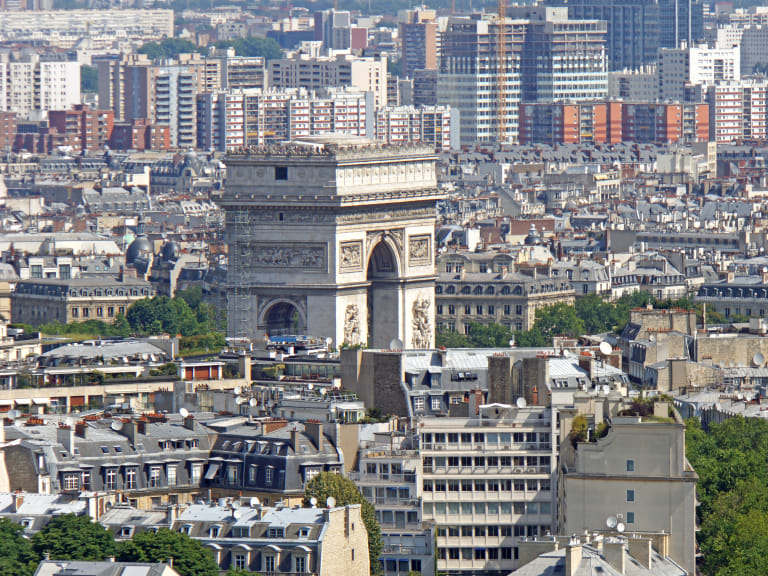
The first monument you will see just in front and to the north of the Tower is the Arc de Triomphe, besides being one of the most important monuments of the city, its strategic location and its 50 metres high will allow you to see it without any problem, even in bad weather. However, I recommend you see the monument from the first floor (115 metres high), as this will give you a more direct view.
If you go up the Tower during the day, you will be able to see the Arc de Triomphe surrounded by trees and partly bordered by the Seine River. And if you are at the Eiffel Tower at night you will be able to see the lights of the Arc and the surrounding parks. Given its remoteness, it is difficult to see its forms very well, although it is easy to identify given its height.
2. Grand Palais
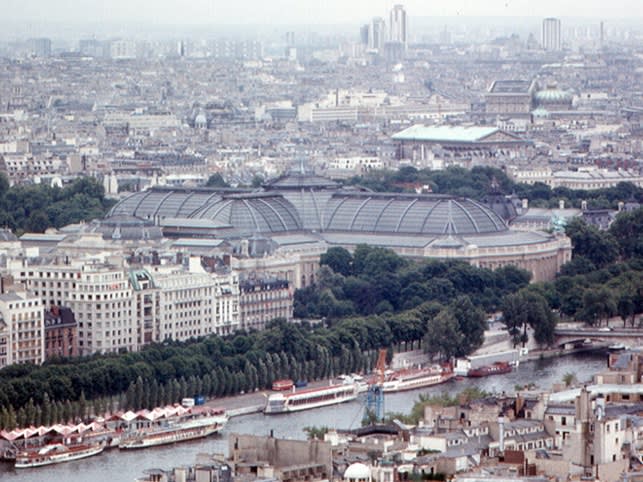
To the northeast of the tower you will see the Grand Palais (the Grand Palace), a 45-metre high, 200-metre long building whose glass roof is the largest structure of its kind in Europe.
The stone facades, columns and friezes of the Grand Palais exhibit classical design features, while the intricate metalwork inside is in the classic Art Nouveau style. The building is made up of three main areas: the Galeries Nationales, the Palais de la Découverte and the Nave.
It is an exhibition hall and a major museum complex built between the Champs Elysées and the Seine River in Paris. If you really appreciate architecture, you should look at this glamorous building.
3. Louvre Museum
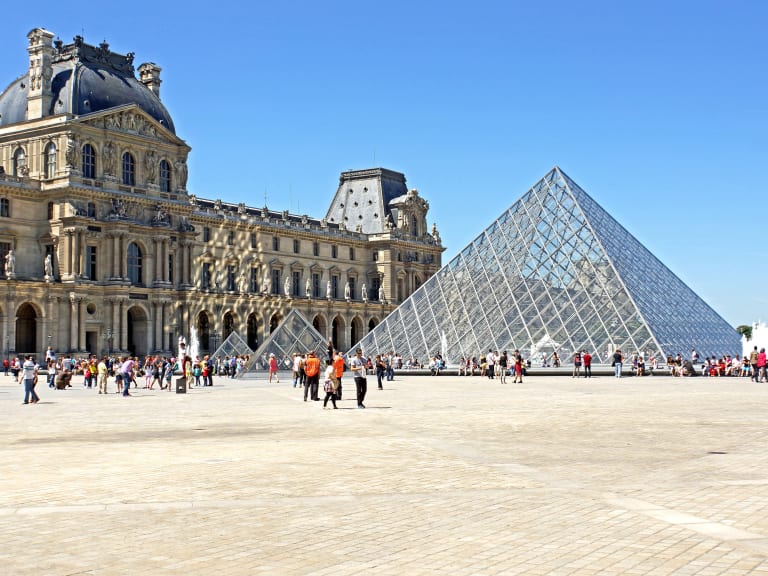
The Louvre Museum is located just east of the Iron Lady about 3.5 km (2.5 miles) in a straight line (5 km) and stands 21.64 metres high on a square base 35.42 metres on a side. Themuseum's glass pyramid, which is what you'll really see from the tower, is the main entrance to the gallery.
The Louvre is said to be the largest museum in the world. Whether true or not, it ranks as one of the most important Parisian museums in Europe and the world. Originally this was the former residence of the kings of France. Today, the Louvre museum exhibits over 38,000 pieces of art, and some of the Louvre's finest paintings are also the finest in the world.
4. Les Invalides
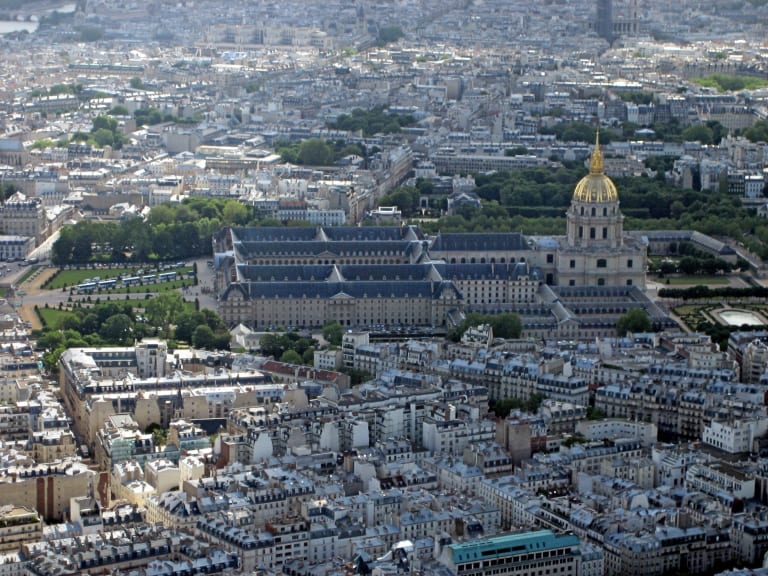
Subtly to the southeast of the Tower you can appreciate Les Invalides whose 107-metre high golden dome is striking from different parts of the city (Imagine from the Eiffel Tower).
The large Les Invalides complex on the left bank is easily recognisable by its magnificent dome. Its decent height and proximity to the tower will allow you to appreciate this incredible palace from any floor of the building, although it is best viewed from the first floor (115 metres). Definitely one of the best buildings to see in Paris.
Fun fact: it was originally built by Louis XIV to house the homeless and wounded veterans of the king's army. Today, the Hôtel des Invalides is famous for housing the tomb of French Emperor Napoleon Bonaparte.
5. Champs de Mars
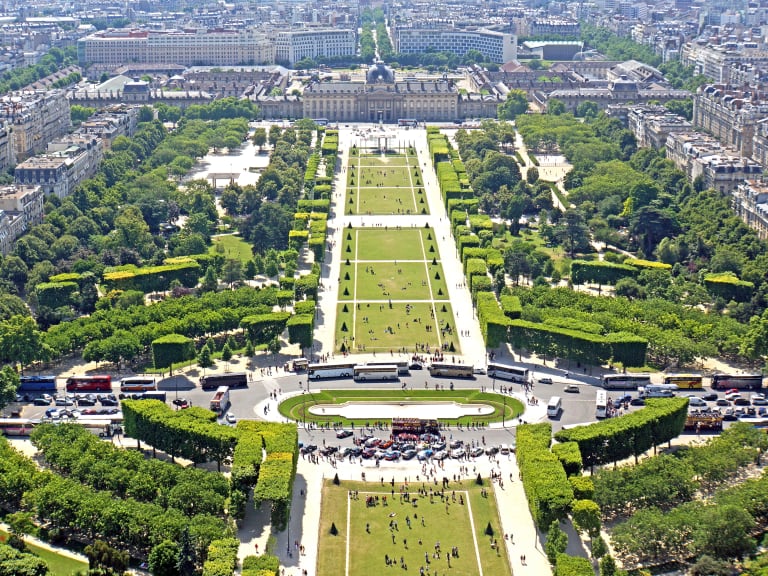
South of the Eiffel Tower and only 482 metres away you can see this brilliant and very famous park. You'll be able to see it from almost any point of the Parisian building.
Although it looks like a green area from the Tower, this open area has witnessed important events, such as different revolutionary acts or the massacre of 1791. If you're visiting Paris in spring, the park is a real treat, and it's surrounded by restaurants near the Eiffel Tower, in case you get a bit peckish from the spectacular views.
6. Notre-Dame
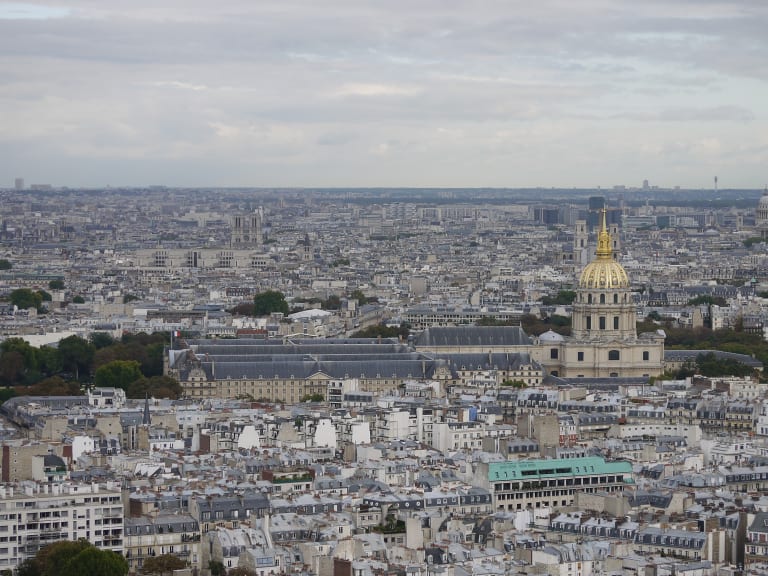
Notre-Dame is just east of the tower and stands 69 metres high. Although its dimensions are 130 metres long and 48 metres wide. Given its location, it is advisable to choose a good day to be able to appreciate it properly from the tower. In any case, I recommend that you climb to the top of the tower (276 metres) to get a good view of this historic cathedral.
Dedicated to the Virgin Mary, Notre-Dame de Paris is one of the oldest Gothic cathedrals in the world and one of the best known.Over the past eight centuries, the cathedral building has been renovated and restored several times. The most significant renovation took place in 1845 and took twenty-five years to complete. During this restoration, the flying buttresses were replaced, the chapel was restored, statues were added and a new rose window was placed.
7. Pont Alexandre III

Pont Alexandre III located to the northeast, not far from the Grand Palais (hence you may see the two in the same plane), is another of the most important monuments to see from the top of the tower.
The bridge is made of a single-span steel arch, an incredible engineering masterpiece of the time. The decoration of the bridge is simply spectacular thanks to its four 55-foot (17 m) columns, with golden winged horses on top at opposite ends of the structure. Beautiful black chandelier, cherubs and other decorative elements make this bridge an impressive construction, chosen by many as the backdrop for their wedding photos. Although it must be said that from the tower you will only appreciate some of these details.
For the record, Pont Alexandre III (Alexandre III Bridge) is the most fascinating bridge in Paris. The flyover, inaugurated for the 1900 Universal Exhibition in Paris, is located between L'Hôtel des Invalides and the Grand and Petit Palais.
8. Sacré Coeur
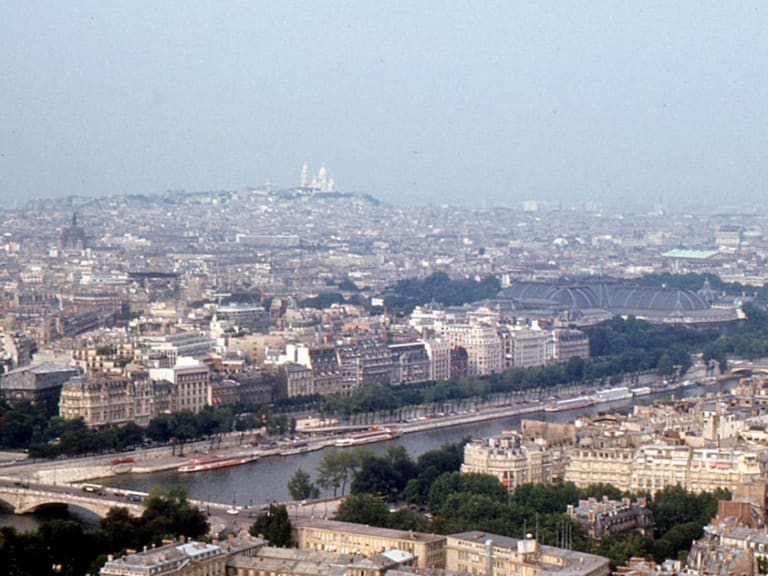
The basilica of Sacré Coeur (Sacré Co eur ) is located far to the northeast of the tower. Despite its 130-metre height, it would be ideal to climb to the top to isolate the basilica from other distractions that may cross your 6.6 km gaze.
If you are interested in seeing the basilica from the Eiffel Tower as clearly as possible, I recommend that you climb the tower only when the sky is completely clear. Who knows, you might even catch a glimpse of the basilica's bell, the largest in France weighing 18 tonnes.
Visible from many parts of Paris, the Sacré-Cœur basilica is the highlight of the Montmartre hill. With its Romanesque-Byzantine style, the church shares more resemblance with the Taj Mahal in India than with the Gothic cathedral of Notre-Dame.
9. Musée d'Orsay

Another sight to see northeast of the Iron Lady is the famous Musée d'Orsay, a grand structure measuring 188 metres long by 75 metres wide and 32 metres high. Its proximity to the tower is a real plus, as it allows you to appreciate its dimensions and architectural details without squinting too much. Its location on the banks of the River Seine makes its observation from the tower even more spectacular.
The Museum is located in a former train station that opened in time for the Universal Exhibition of Paris in 1900, and only 783 metres from the Louvre Museum, both ranked as two of the best museums in Paris in the world.
10. Seine River

The Seine River, despite being a flow of water, it makes a lot of sense to see it from a considerable height, as you can see where it flows and what dimensions it has . And what better observatory for this than from the Eiffel Tower itself? The best thing is that from the top of the tower, and thanks to its dimensions, you can enjoy it at any time of the day. If you're at the Eiffel Tower at night you can follow the route of theSeine river cruises, and if you climb the tower during the day, you can see even more clearly how incredibly long it is and how it meanders through Paris.
Today it is one of the main tourist attractions and landmarks of Paris thanks to the fabulous bridges that cross it and thanks to the fact that it surrounds the two islets of Paris. The River Seine is a major river in the northwest of France and is actually the second longest river in France after the River Loire with an impressive length of 776 km, the mouth of the river is located in the English Channel between Le Havre in the Haute Normandy region and Honfeur in the Basse Normandie region.
Viewpoints of the Eiffel Tower
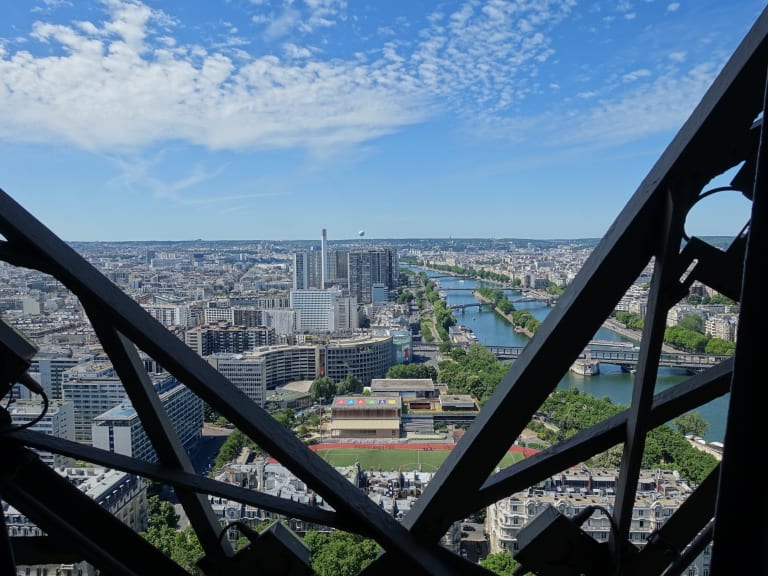
- First floor: From the first floor you can see the areas closest to the Tower with great precision, among these places are the Parc du Champ-de-Mars and the Musée de L'Homme.
- First floor: This first floor can be considered a viewpoint as such, Paris begins to unfold and you can already see some of the most important monuments of the city such as those mentioned in the previous sections. It is worth noting that this floor is the most visited.
- Top: The third floor is simply spectacular in terms of views, Paris seems to fall silent and you can see Paris at your feet. It is here where you can estimate the extent of Paris and see some remote monuments such as the Sacre Coeur Basilica and the Montmartre area in general.
How to take pictures from the Eiffel Tower?

The height has a big influence on photography, as both the light and the degree of focus are very different from what you are used to. On the one hand, the light is an advantage, as there is no obstacle that can prevent your camera from capturing enough light, unless you are taking pictures at night. On the other hand, the focus is the weakest point as there is no close object to focus on, in case you want to focus on a specific area you should take a good lens with you.
However, if your idea is to take panoramic pictures then you don't have to worry, any camera position will do, depending on the frame you are looking for. However, I don't recommend taking pictures at night from the Eiffel Tower, as the light from the tower itself "dazzles your camera" and makes it difficult to capture images of the city in a clear way.
